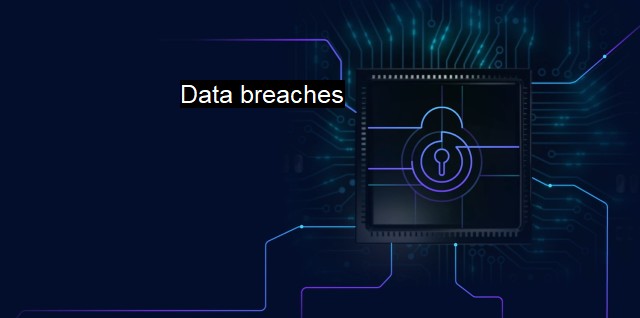What are Data breaches?
How Antivirus Software Helps in Managing and Preventing Data Breaches in the Digital Age
Data breaches are a major concern in the ever-evolving field of cybersecurity and antivirus technologies that focus on protecting sensitive information. In simplest terms, a data breach occurs when an unauthorized individual gains access to confidential information. These attacks are strategically formulated to penetrate the secure IT infrastructures of organizations, allowing cybercriminals to view, copy, or transmit sensitive data.The growing global digital ecosystem facilitates an increase in data breaches due to the diversity of ways cybercriminals can obtain unauthorized access to data. Cybersecurity vulnerabilities give rise to a vast array of cyber threats that lead to data breaches, including malware attacks, phishing scams, SQL injection attacks, man-in-the-middle assaults, and denial of service attacks. Data breaches can occur on various cybersecurity fronts, such as mobile devices, cloud storage, network security, and application security.
The kinds of data usually targeted in data breaches include personal identification information, such as names, addresses, emails, contact details, and social security numbers. Financial information, such as credit card numbers, bank account details, and transaction histories, are also highly valuable to cybercriminals. health records, educational data, business secrets, and other forms of sensitive information are frequent targets.
The context of data breaches is noteworthy within the antivirus and cybersecurity domain. Antiviruses are the first line of defense for many organizations against malware and cyber threats, designed to detect, prevent, isolate, and neutralize various forms of malicious software. even the most potent antiviruses are not entirely infallible and cannot combat advanced threats that result in data breaches. Advanced persistent threats, zero-day exploits, and cases of internal sabotage often bypass traditional antivirus protection mechanisms, underscoring the need for a holistic, layered approach to cybersecurity.
Timely detection of data breaches is of utmost importance to minimize the damage. Once a data breach is confirmed or suspected, organizations must address the situation promptly by assessing the scope of the breach, identifying the compromised information types, and communicating the occurrence to affected individuals and relevant authorities. Data breaches can have disastrous impacts, not only on the immediate financial front but also on an organization's reputation and customers' trust, resulting in loss of business.
In response to the growing wave of data breaches, cybersecurity experts advocate for blockchain technology, machine learning algorithms, and artificial intelligence-powered systems as part of advanced defense methodologies. These technologies not only help detect a potential threat but can also predict an attack before it happens by identifying anomalies in behavior and data traffic.
To tackle data breaches, organizations’ cybersecurity strategies must include the implementation of robust incident response plans that include predefined best practices. These would involve regular patching of security holes, ensuring regular off-site backups for data, emphasizing the least privilege model, and educating employees about the potential risks associated with cyber threats.
Encryption, tokenization, intrusion detection systems, firewalls, and strong password policies are critical for strengthening cybersecurity architecture against data breaches. Maintaining a regular schedule for security audits is another significant step in understanding an organization’s susceptibility to potential breaches.
Privacy regulations like the General Data Protection Regulation (GDPR) also exist to protect consumer data and ensure that companies take active measures against data breaches. Non-compliance with this regulation can result in significant penalties for companies.
While responding to and protecting against data breaches is an integral part of antivirus and cybersecurity domains, creating a strong culture centered around cybersecurity awareness is instrumental in reducing an organization’s risk profile and securing sensitive information in our interconnected digital age.

Data breaches FAQs
What is a data breach?
A data breach is an incident in which sensitive, confidential or protected data is accessed or stolen by an unauthorized person or entity. It can occur due to malware attacks, hacking, phishing, social engineering, and other cybercrime methods.How can data breaches affect individuals and companies?
Data breaches can have serious consequences for both individuals and companies. Personal information such as social security numbers, credit card numbers, and passwords can be stolen and used for identity theft and financial fraud. For companies, a data breach can lead to loss of trust among customers, damage to reputation, financial losses, and legal and regulatory consequences.What are some measures that can be taken to prevent data breaches?
Preventing data breaches requires a multi-layered approach. Some of the important measures that can be taken include implementing strong passwords, encrypting sensitive data, installing firewalls and antiviruses, conducting security awareness training for employees, monitoring network traffic, and having a response plan in place in case of a breach.What should be done if a data breach occurs?
If a data breach occurs, the affected individuals or companies should take immediate action to minimize the damage. This may involve changing passwords, freezing credit checks, informing customers and stakeholders, conducting an investigation to determine the cause and extent of the breach, and notifying law enforcement agencies and regulatory bodies. It is also important to implement measures to prevent similar incidents in the future.| | A | | | B | | | C | | | D | | | E | | | F | | | G | | | H | | | I | | | J | | | K | | | L | | | M | |
| | N | | | O | | | P | | | Q | | | R | | | S | | | T | | | U | | | V | | | W | | | X | | | Y | | | Z | |
| | 1 | | | 2 | | | 3 | | | 4 | | | 7 | | | 8 | | |||||||